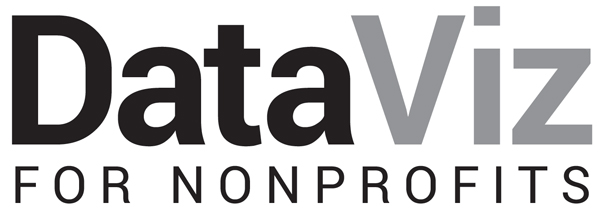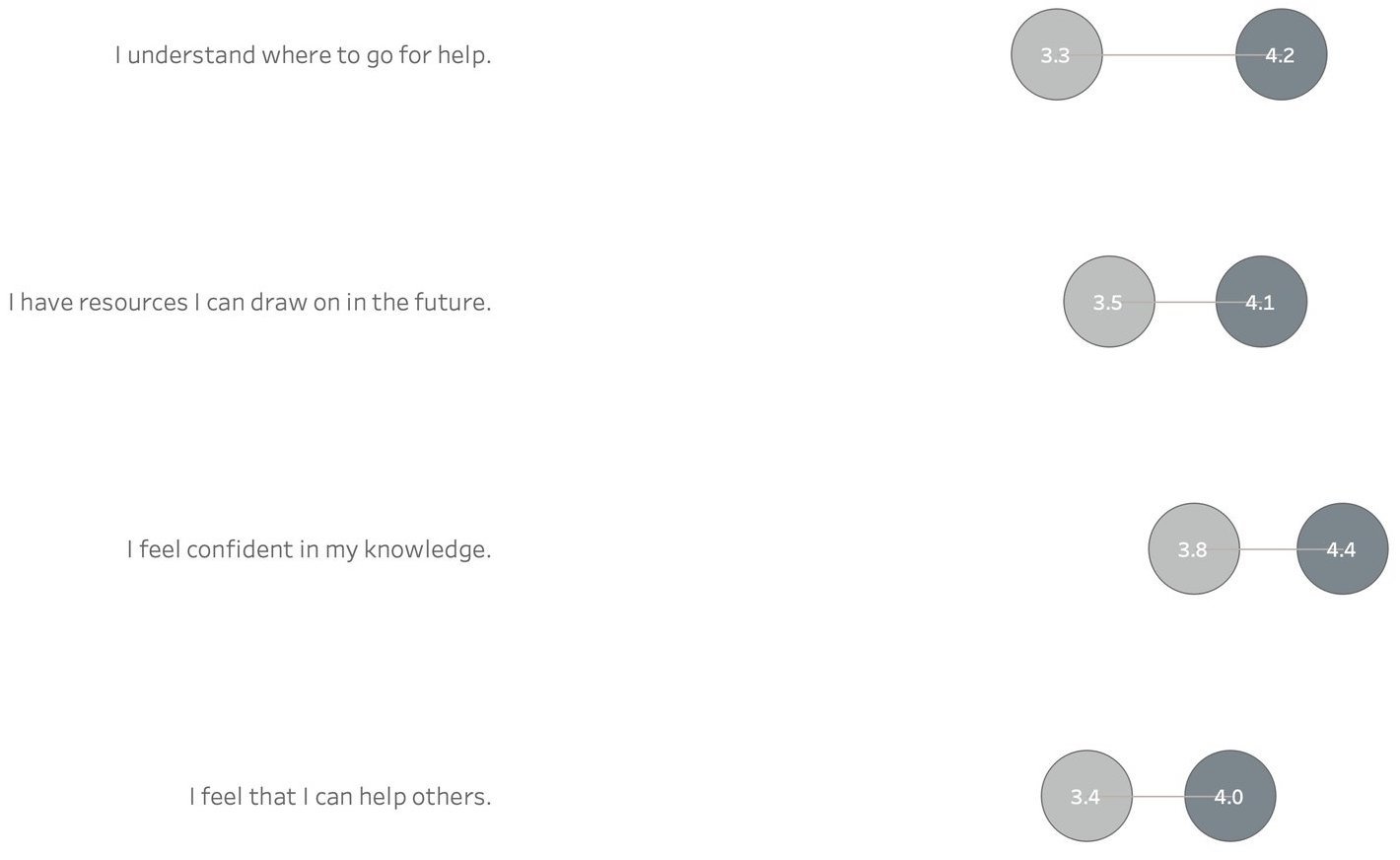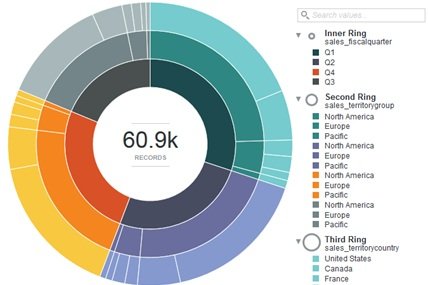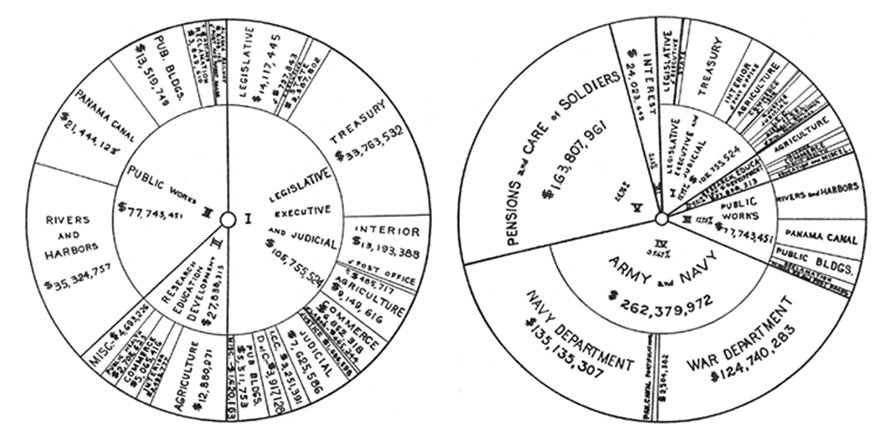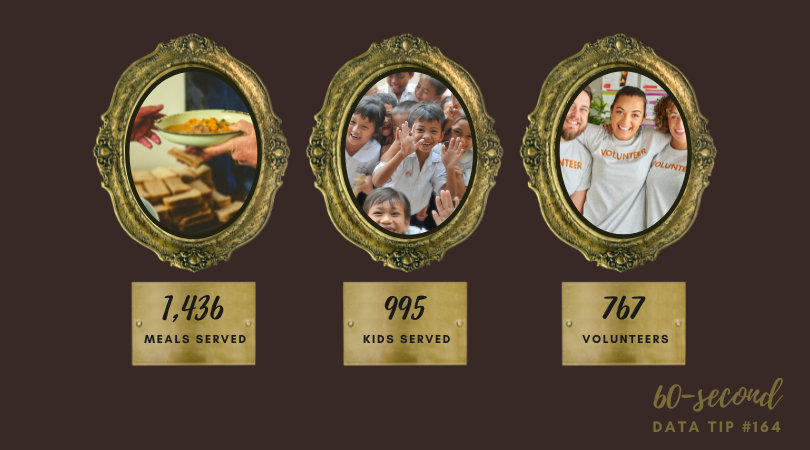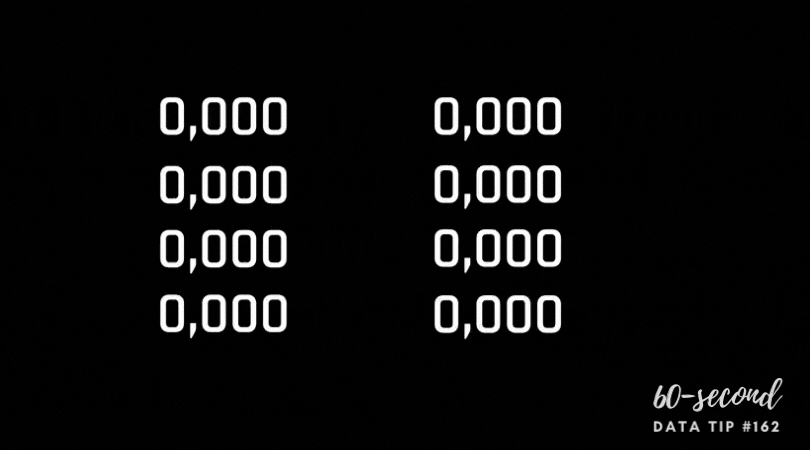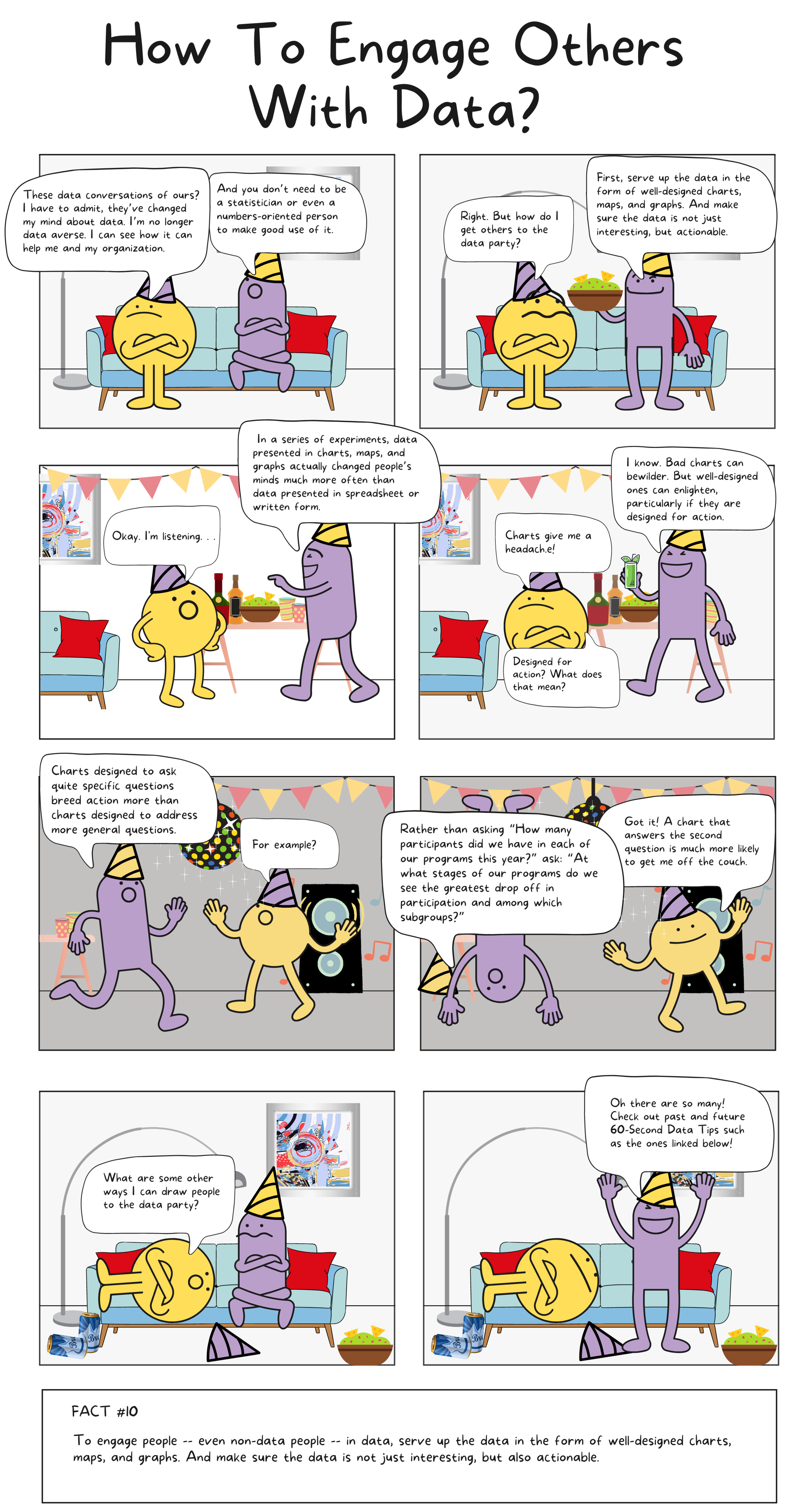Jun 22, 2022, 8:00 am PT/11:00 am ET
Data visualization is like one of those unlikely couples. One partner is outgoing and a great storyteller. The other is introverted and sticks to the facts. To make great charts, maps, and graphs, you need to channel both partners in this odd couple: the artist and the analyst. In this workshop, I will offer up 10 key rules about composition that artists know and that analysts (and the rest of us) can apply when presenting data.
Presenter: Amelia Kohm | Data Viz for Nonprofits. Sponsor: Nonprofit Learning Lab
REGISTER for this free event.
July 20, 2022, 1:00 pm PT/4:00 pm ET
Almost every organization has two superpowers. The first is the data that they have packed away in databases and spreadsheets, often collecting virtual dust on their servers. The second is the visual faculties of their donors, clients, board members and staff members. While most of us glaze over at the sight of a spreadsheet, humans are wired to process visual information at lightning speed. By visualizing our data, we make it more accessible and usable.
You will leave this webinar with a clear understanding of:
The two superpowers organizations have and how to wield them more often and more effectively;
How you can use data visualization (aka data viz) to address key problems you face showing and evaluating your impact;
The types of visualizations that work best for different purposes; and
How to turn a good viz into a great one.
Presenter: Amelia Kohm | Data Viz for Nonprofits. Sponsor: techsoup
REGISTER for this free event.
Let’s talk about YOUR data!
Got the feeling that you and your colleagues would use your data more effectively if you could see it better? Data Viz for Nonprofits (DVN) can help you get the ball rolling with an interactive data dashboard and beautiful charts, maps, and graphs for your next presentation, report, proposal, or webpage. Through a short-term consultation, we can help you to clarify the questions you want to answer and goals you want to track. DVN then visualizes your data to address those questions and track those goals.
